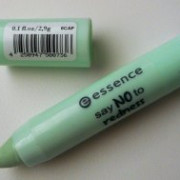Gymshark
Содержание:
Now, take a look at Gymshark’s traffic from Apr 2016 until now.
As you can see, Gymshark’s traffic has gradually increased over time. Their traffic reached a peak at 6.3M in Nov 2018, when they ran a huge Black Friday campaign called Blackout with up to 70% off site-wide (more on this later).
Here’s a quick look at how Gymshark gets most of their web traffic:
With a cult-like following and a focus on exclusive products, it makes sense Gymshark relies on direct and search traffic as their main traffic drivers. They get the majority of traffic without needing a large paid search investment.
Also, a considerable amount of direct traffic can be attributed to a word-of-mouth awareness (through pop-up stores and events) that Gymshark worked on so hard from Oct 2017 up until now. Put it differently, since so many people already know Gymshark by name, they just type Gymshark directly into the search engines. This leads to a huge amount of branded traffic for Gymshark.
Look at the keywords that really bring the most amount of traffic to Gymshark, and you can see the word “Gymshark” shows up in every single one!
Their other top keywords usually relate directly to their product offering, such as gym shorts, workout clothes, etc.
The following is a breakdown of the traffic that Gymshark gets from social media:
As might be seen, YouTube is a major driver, pulling in more than half of all this traffic. To get traffic from YouTube, Gymshark created a YouTube channel where they shared a lot of inspirational videos featured by fitness celebrities. Read on to find out more juicy details about this.
OK, now you’ve understood an overview of Gymshark’s traffic sources. It’s time to figure out how they could build this massive amount of buzz for their brand.
Here’s a leak: it’s all about marketing strategies.
A short history of multi-millionaire ‘Gymshark’ empire: How it disrupts the gym apparels market
The entrepreneurial fire was already burned in Ben Francis’s belly for a long time. When he was still a young teenager, he created an online store to sell car license plates. He developed two iPhone fitness tracking apps, and then made around £8,000 from one of which. He also worked as a pizza delivery man at Pizza Hut.
In 2012, his idea of Gymshark was born. At that time, he was just a full-time, 19-year-old student.
At first, Francis focused on only health supplements. Since he started with zero funding, dropshipping was the business model he chose. He dropshipped the products from other retailers. “You have to be creative with the front end and back end of your business when starting”, he said.
Not long after that, he realized the profit margins of this business were too low and had no potential in the future. So, he decided to switch to clothing.
Francis admitted he didn’t have any immediate grand business plan. He just thought “it was more a case of ‘I really want to wear this,’ so I made it,”. He also had no idea how to price items. “It was literally a case of what would we want to pay for something… There was no considered approach. We were like, ‘we would pay £20.”
With such a weak foundation, how could this “little” Gymshark beat other competitors and become a £400M eCommerce empire?
BodyPower Expo, one of the premier fitness trade shows, is where it all began. This is the big time and idea for Gymshark to move forward.
At the end of 2012, Francis attended BodyPower. He wanted to bring Gymshark to the upcoming show, and in order to do so, he almost emptied his bank account to get space on the trade show floor. He and his friends worked so hard to develop the Luxe fitted tracksuit and build the brand name, which eventually paid off. This product spiked Gymshark’s growth with the so-high order quantity that they never expected.
After getting back from the trade show, they put products online, and then things went nuts. Within half an hour, they had more traffic and more sales than ever, roughly $42,000 in a single day, compared to $400/day in the past. Following this momentum, Ben and his teams started off scaling Gymshark.
Another interesting thing about Gymshark is they sell and ship every product. They invested in their own warehousing to control the whole supply chain without hiring a third-party logistics company. This sets them apart and also ensures everything is under their control.
Over six years later, Gymshark becomes a global fitness apparel & accessories brand, manufacturer and online retailer which sells to 131 countries. They also have a combined audience of 65M followers, creating such demand for its products that many new launches sell out within hours. To prove that we don’t make this stuff up, take a look at this:
Their sales increased dramatically, right?
And, here is their 42,000 sq ft Solihull-based headquarter with the capacity to accommodate 450 staff.
Source: Oktra
As for the future, Francis and his team plan to expand Gymshark’s overseas sales. They aim to open more than 25 international online stores by 2020, from their current number at 11.
Tip 3. A sure-fire Black Friday marketing strategy to sell out 90% of products within a day
On Gymshark’s Blackout FAQ page, they stated, “Suffice to say, we rarely have sales”.
Let us finish this sentence: “But when we have, we make a BIG one”.
Just kidding, but that’s true!
Every year, Gymshark gives their customers two big sales, and Black Friday is one of them. In Nov 2017, they ran a very successful Black Friday campaign, which led to a huge influx of sales.
To ensure its brand awareness and sales were maximized during this crucial retail occasion, Gymshark worked with the Facebook Creative Shop to devise a powerful campaign.
Source: Gymshark
The brand decided to take the opposite approach to its usual tactics. Instead of using bright images, they switched to blacked-out pictures instead.
Gymshark began its Black Friday sale on Monday and ran it for a week (called Blackout), using an array of different content each day. The Black Out campaign featured models wearing Gymshark’s Black Friday exclusive product and even featured user-generated content from fans who truly brought into the campaign. A combination of Instagram ads was used, including Stories ads, carousel ads, and dynamic ads in the Instagram feed.
At that point, a question is raised: Why did Gymshark extend the sale to 7 days instead of 1 day as normal?
There are two main reasons. First, their potential customers wouldn’t have to spend their hard-earned cash on a different sale, meaning they can buy more at Gymshark. Second, a week-long sale means they were more likely to get more customers. However, this practice has been widely used by many eCommerce retailers, so what made Gymshark stand out of the crowd?
1. The feeling of missing out (FOMO)
When used properly, FOMO can bring massive success for a business. Gymshark took advantage of this psychology phenomena by setting the start of the sale on Monday at 3 PM and shutting down the site by only showing this countdown timer
Source: Strategy Plus
The timer and the blackout deals were also hyped on various Influencers’ social media platform, making it the perfect storm. As soon as the timer stroke the last second, the blackout site appeared, showing the offers, then, it was all up for grabs.Bee doo bee doo bee doo
2. The checkout line
On the first day of the Black Friday sale, two minutes before a customer proceeded to checkout, he was stuck in a line:
Source: Strategy Plus
After approximately 10 minutes, he finally managed to get to the last page. However, by the time he got to this point of the process, his chosen product was sold out!
Source: Strategy Plus
He didn’t see his wanted item in the cart. This means someone else also had the same item in their cart, and the first one to get to the last page would get it.
The unexpected influx of people caused many items to result as ‘sold out’ and for the website to crash almost straight away. But, this increased the aura of exclusivity that surrounds the Gymshark brand and was no doubt a show of the incredible success that was, despite the difficulties encountered.
Gymshark saw phenomenal results across the board. The campaign reached 16.4 million people, and 40% of purchases made during the campaign period came from Instagram. They also achieved a 6.6X return on ad spend.
|
Key takeaway
How could Gymshark survive when they only have two sales a year, not to mention they don’t give any discount or coupon code on the page? It’s because they own exclusive products and have a huge community of people who are willing to pay more to get one from them. If you are going to try something like this, be sure you’ve created strong foundations like Gymshark. |








